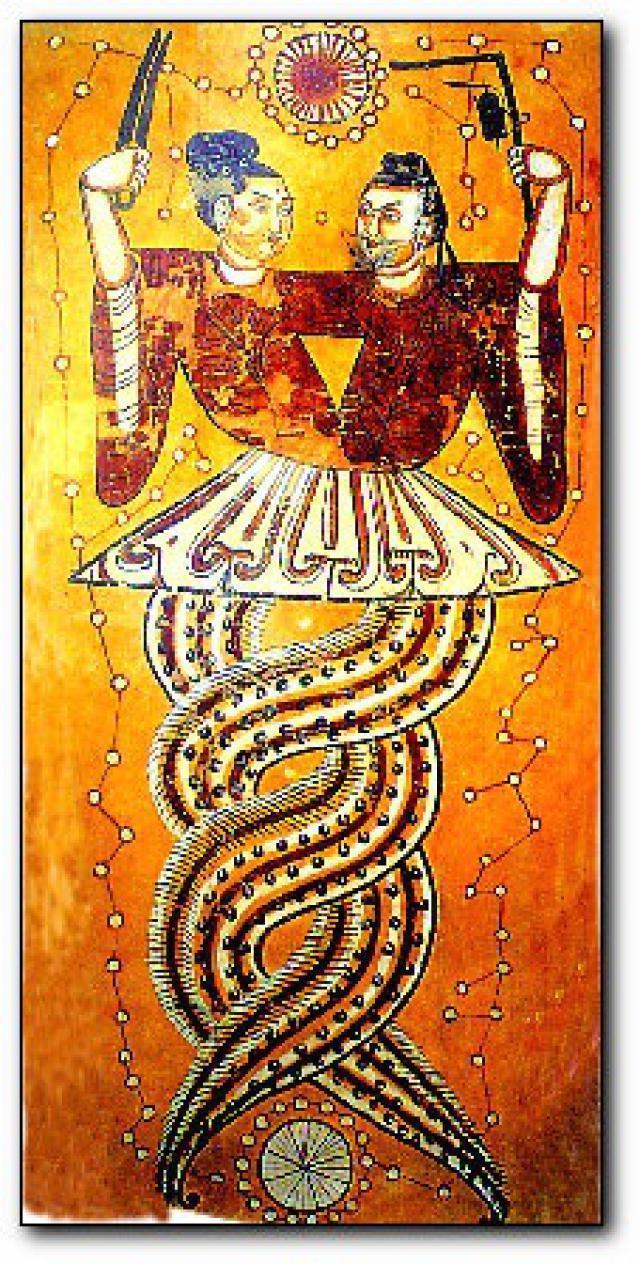 What is Taichi?
What is Taichi?
To answer that question, we need to go back to the roots of Chinese culture – 6,000 years ago – to the story of Fuxi and NüWa.
Chinese legend tells that the land was swept by a great flood in which civilization was lost and all people perished. Only Fuxi and his sister Nüwa survived. They lived on Mount Kunlun in Northern Tibet, and asked for a sign from the Emperor of Heaven to be man and wife. Their union was approved and they began to create a new human race.
Fuxi is said to have showed mankind how to use fire, and invented acupuncture needles.
FuXi is said to have developed Chinese characters by carving small pictures and numbers onto bones and tortoise shells.
Fuxi is credited with inventing the BaGua, a divination system of 8 trigrams by which the underlying structure of the universe could be expressed and understood. The Bagua is the forerunner to the 64 hexagrams of the I-Ching.
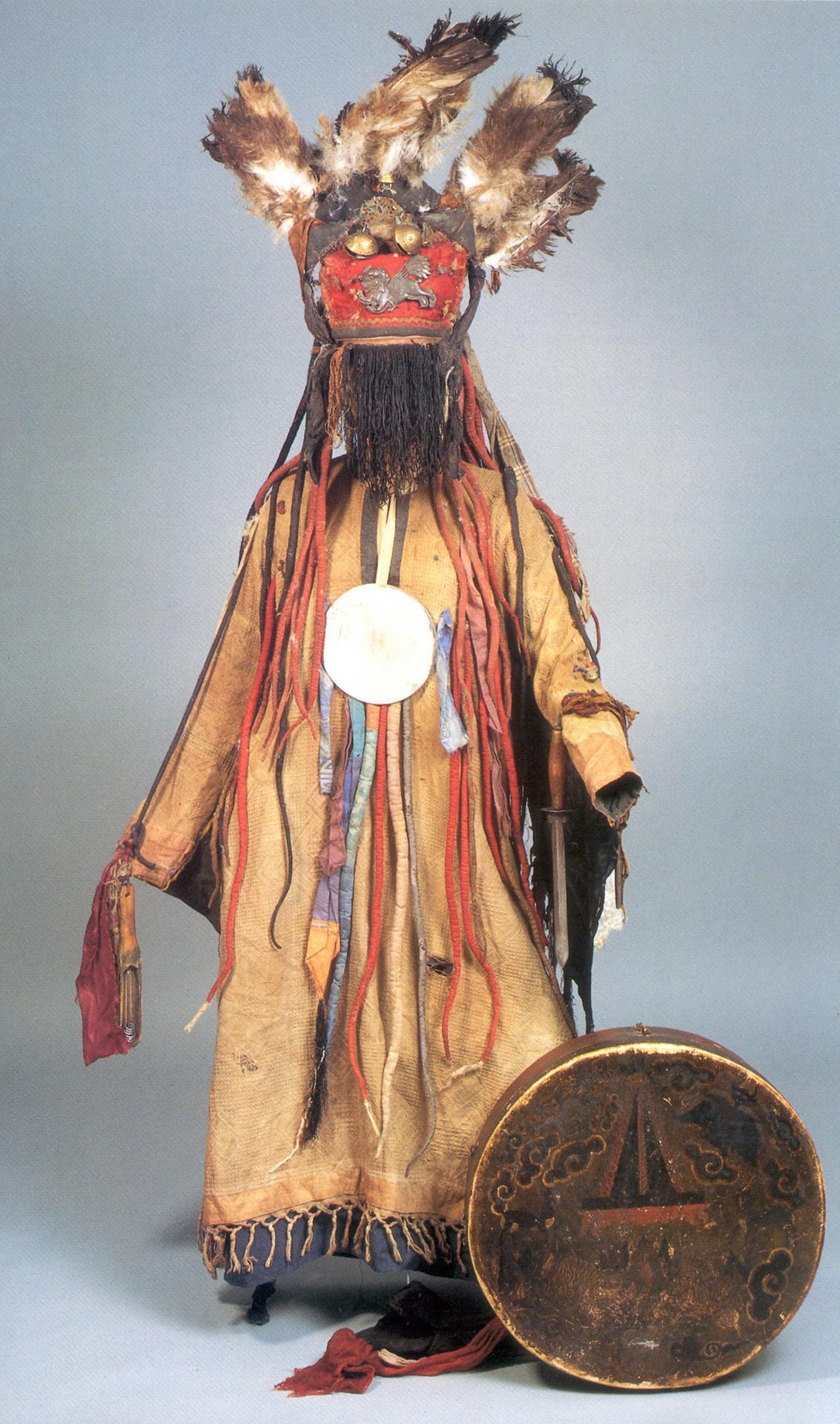
The roots of Daoism can be found in ancient shamanic traditions.
The Wu, or shamans were said to communicate with spirits of the land, plants, and animals. In meditation, they traveled to distant galaxies, and deep into the earth, to commune between human and supernatural realms.
These practices were shared in rituals, ceremonies, and became Qigong, meditation, and Internal Alchemy practices of many lineages. These in turn, are the roots of Taichi.
Qigong vs. Taichi? What’s the difference?
Qigong forms are mostly symmetrical. They are short movements that repeat. Each Qigong movement may have a name and a purpose. Qigong is used for Taichi warm-ups
Taichi is a more complex series of a specific number of movements in a poetic sequence. Taichi requires greater skill, however anyone can benefit from it it at any level. Good Taichi is a continuous flow of seamless, graceful, grounded, movement.
Both Qigong and Taichi can help improve balance, breathing, flexibility, and wellbeing. Both are designed to enliven meridians, purify the body, and activate the higher spirit.
What does Taichi Mean?
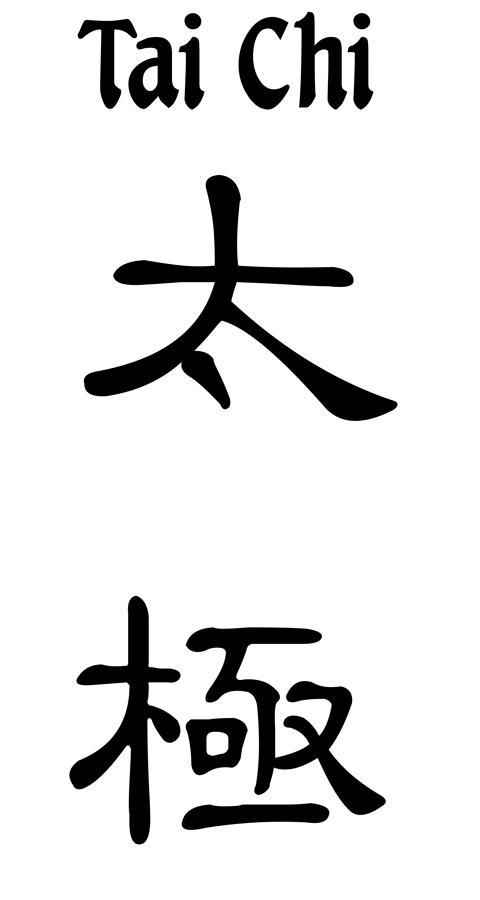
Tai is usually referred to as great or supreme. Chi can be referred to as Ultimate. Together these characters are said to mean Supreme Ultimate.
However there is a deeper meaning hidden in the calligraphy characters, revealing that Taichi represents:
“One centered person, rooted in the dantien between heaven and earth, standing like a pine tree (relaxed and serene in all seasons), using the mouth and the hands in a balanced and contained fashion on Earth.” A worthy goal.
Taichi is an energy practice to cultivate spiritual awareness. If Taichi is seen as simply physical exercise or as a martial art only, it will be impossible to understand its true meaning or value. A purely physical view can obscure the essence of Taichi, which is a path towards cultivation of the original self.
By balancing the dualism of Yin and Yang in our body and our mind, the actions of dualism come to the forefront of our consciousness. Taichi is therefore a method to help us recognize dualism, and thus opens our path for a return to non-dualism, or living in the Oneness.
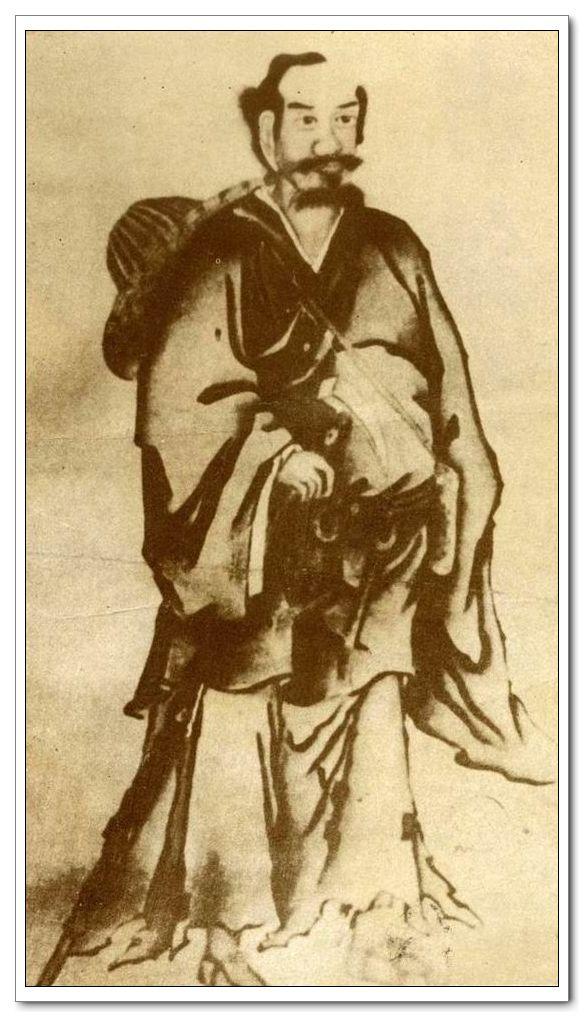
Zhang SanFeng, Inventor of Taichi
Zhang Sanfeng was a legendary Daoist master who is believed to have lived in the Wudang Mountains, invented Taichi, and to have achieved immortality. Much of the written material about him is mythical or contradictory. He is said to have been born either in 960, 1247 or 1279. And he is said to have lived almost 300 years.
Master Zhang SanFeng was often consulted by emperors and martial artists. But he was frequently impossible to find, often pretending to be an old beggar. Still no one knows the truth about Zhang Sanfeng. He lived so long, no one was left alive who could remember his story.
One day walking on Wudang Mountain, Zhang Sanfeng saw a snake and a crane in deadly combat. He observed that before attacking, the snake would raise its head and bow its body, as if gathering Qi, ready to strike like an arrow. The crane would deflect the attack effortlessly with a downward arc of its powerful wing. The crane would stab its beak down, while the snake gracefully dodged the strike.
This natural display of the grace of Yin and Yang in the cycle of life, death, and Nature made a great impression on Zhang Sanfeng. From this he is said to have developed Taichi. All his teachings employ this simple understanding, that yielding and gathering Qi is more effective and more powerful than using brute force.
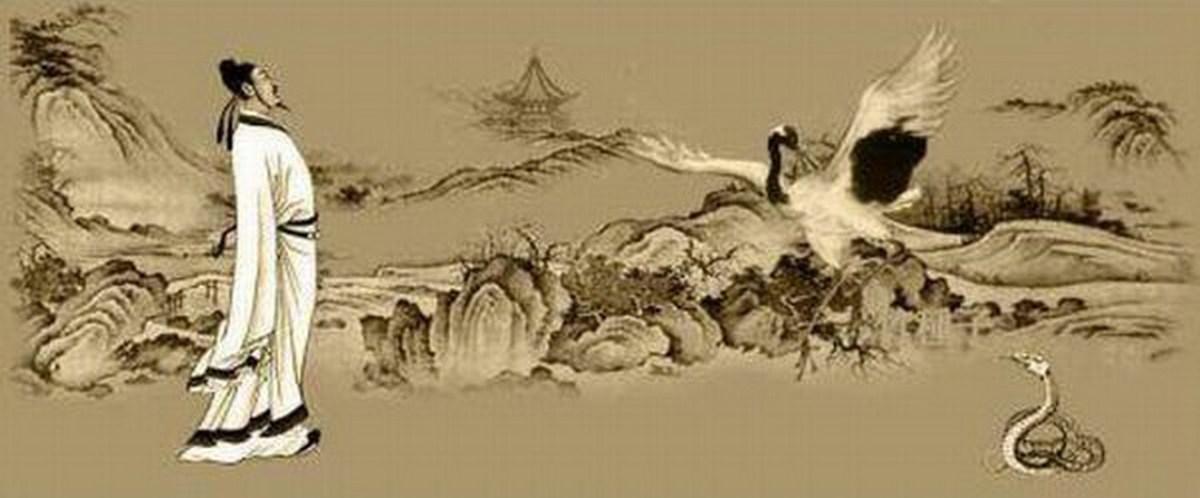
The origin of Taichi came from Zhang SanFeng’s revelation while watching a crane and serpent in mortal combat.

Zhang SanFeng lived in Wudang Mountains, the birthplace of Taichi. Wudang is a small mountain range in NW China. The Golden Summit of Wudang Mountain houses many monasteries, temples, and practice centers for Taichi, Qigong, and Martial arts.
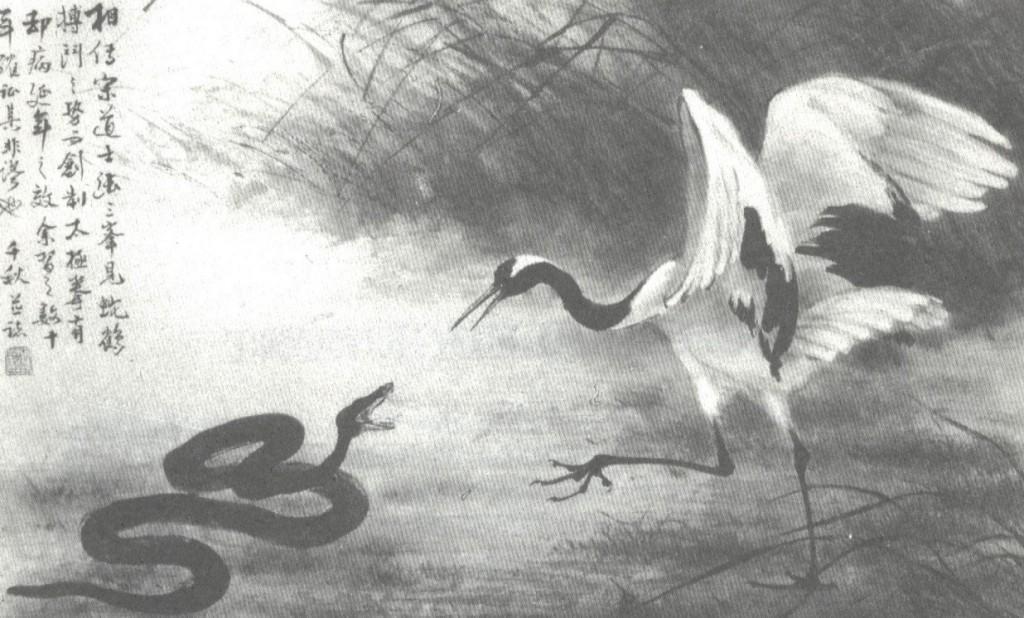
Inspired by the serpent and the crane in combat, Taichi is never violent. Its soft style cultivates a balanced understanding that strength originates in the softness, the deep internal source of Yin, which must be digested in order to demonstrate external power or Yang. In this way Taichi cultivates greater internal power and balanced awareness, leading to mental clarity, and a different way of being – living from the inside-out.
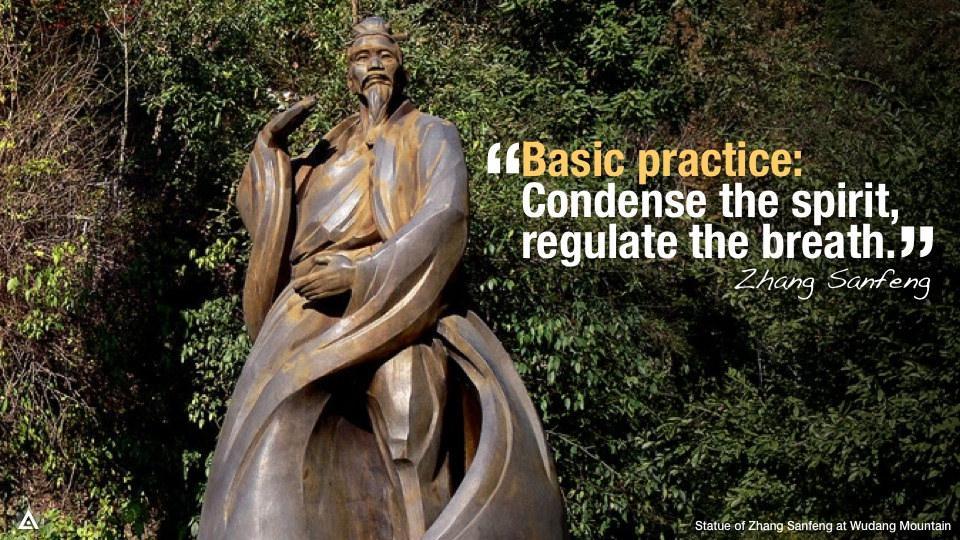 The soft style of Taichi cultivates a balanced understanding that strength originates in the deep internal source of Yin, which must be digested in order to demonstrate external power or Yang. In this way Taichi cultivates greater internal power and balanced awareness, leading to mental clarity, and a different way of being – living from the inside-out.
The soft style of Taichi cultivates a balanced understanding that strength originates in the deep internal source of Yin, which must be digested in order to demonstrate external power or Yang. In this way Taichi cultivates greater internal power and balanced awareness, leading to mental clarity, and a different way of being – living from the inside-out.
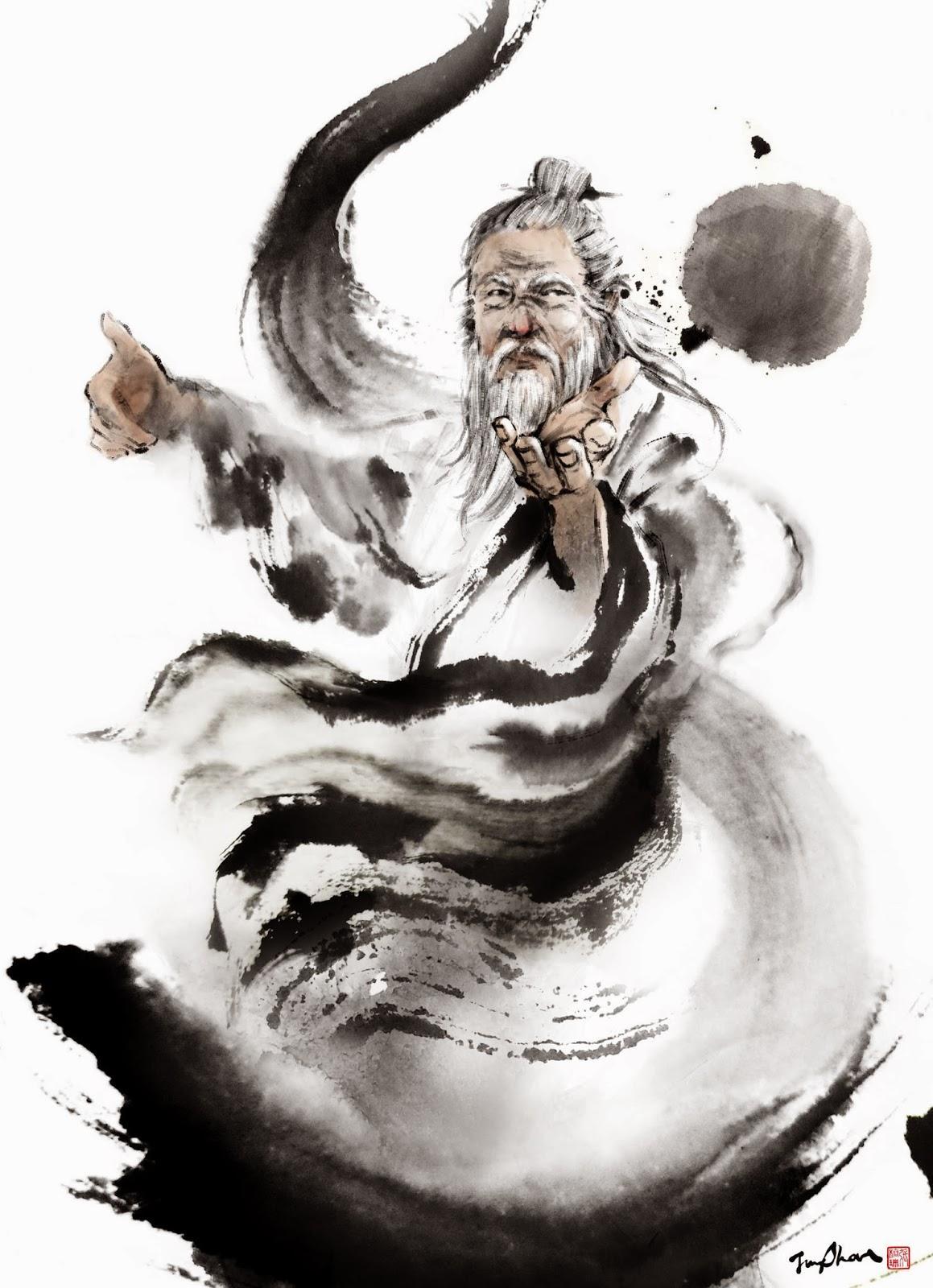
Zhan Sanfeng represents the spiral power and awareness in Taichi.
Three Primary Principles of Taichi Practice:
- Be aware of a Silky Bubble, or Tai Chi ball of energy between your hands.
- Open the body, the joints, relax and vitalize the 20 Meridians inherent in every move.
- Thread the 9-holed pearl, or the flow of joyous energy through the 9 joints (toes, ankles, knees, hips, spine, shoulders, elbows, wrists, fingers).
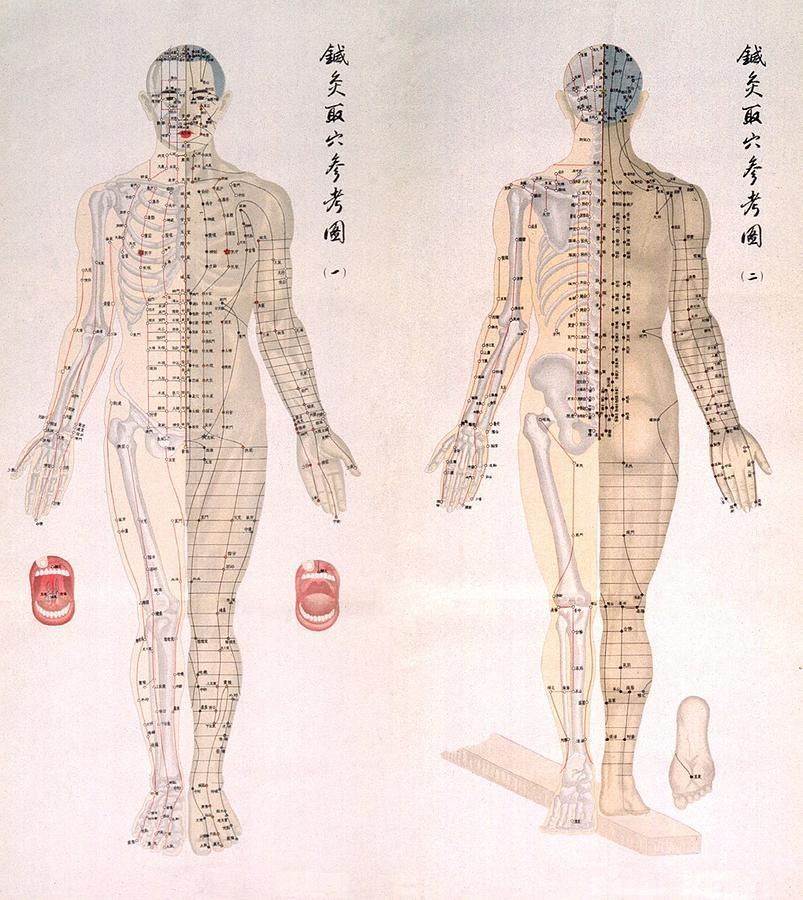
Taichi cultivates Qi in the 20 meridians.
The 8 extraordinary meridians originate in an embryo shortly after conception, and represent the spiritual-ancestral meridians, essentially a map to our life destiny. These give rise to, connect, and support the 12 organ meridians. When all 20 meridians are balanced and activated, we experience optimum health in the body, thus allowing the spirit to reach fruition.
Taichi activates especially the extraordinary meridians. This makes Taichi an excellent vehicle for deep cultivation of Qi and spiritual growth.
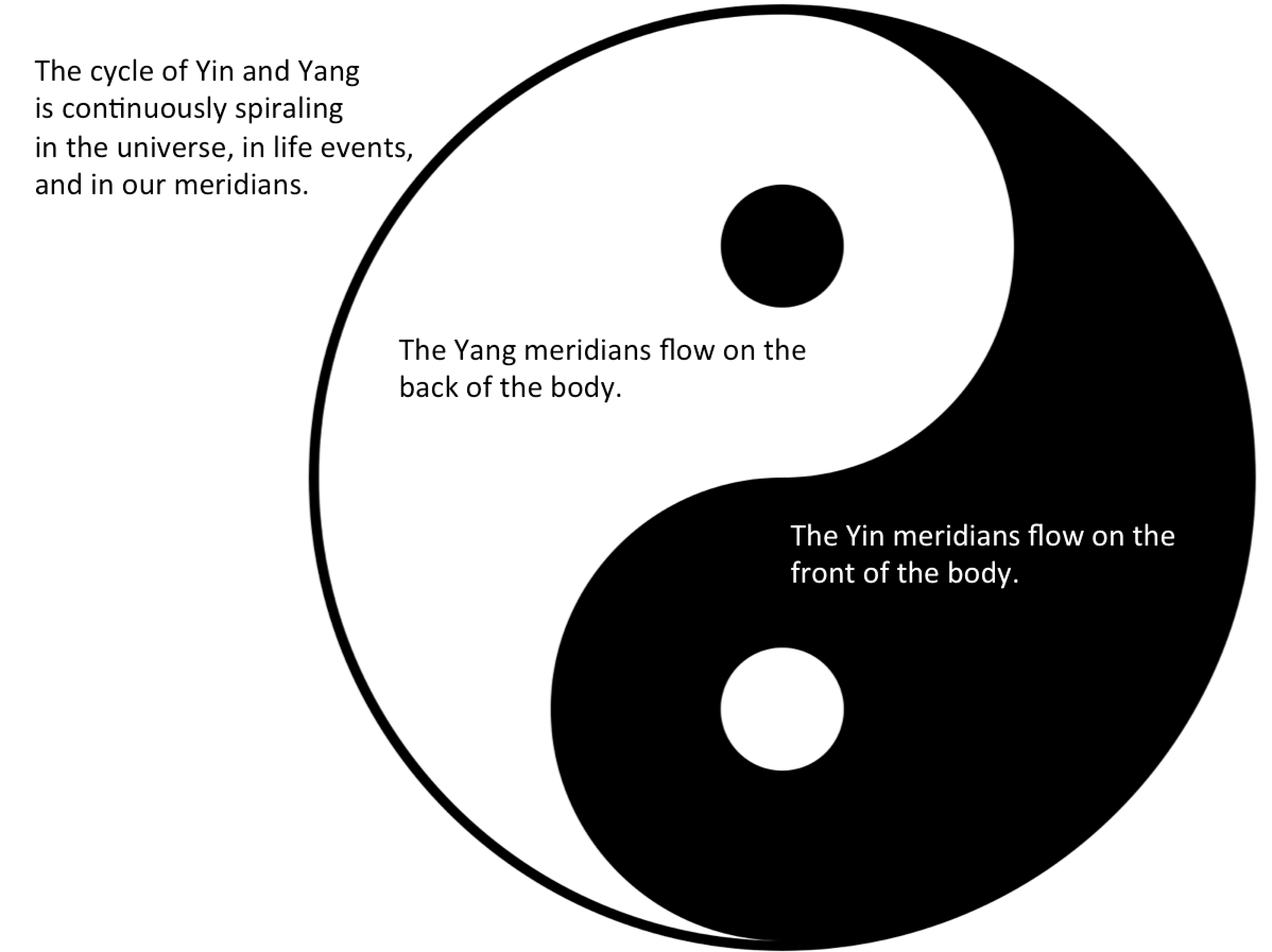

Whirlpool Galaxy M51
The spiral pattern of Yin and Yang, the balance between inner and outer expression is evident on every level of universal life, from the smallest atoms, to the cycles in our bodies, and even the vast Whirlpool Galaxy. Every galaxy is said to have a central black hole pulling inward in the center.
But what keeps the whole galaxy from collapsing inward into the Yin void? Aha! The outward centrifugal force of the expressive Yang keeps it in balance. Thus Yin and Yang support and balance each other on all levels of the physical realm.
“As above, so below” said Hermes Tresmegistus
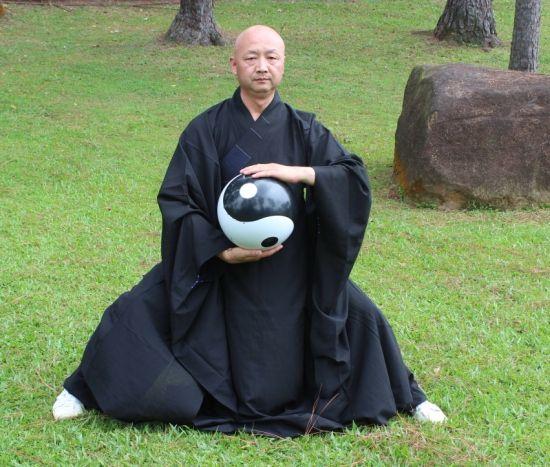
A spiral of Yin and Yang is located in the dantien, the energy center of the body, three fingers below the navel. This is the center of our personal power, Qi, and energy in the body.
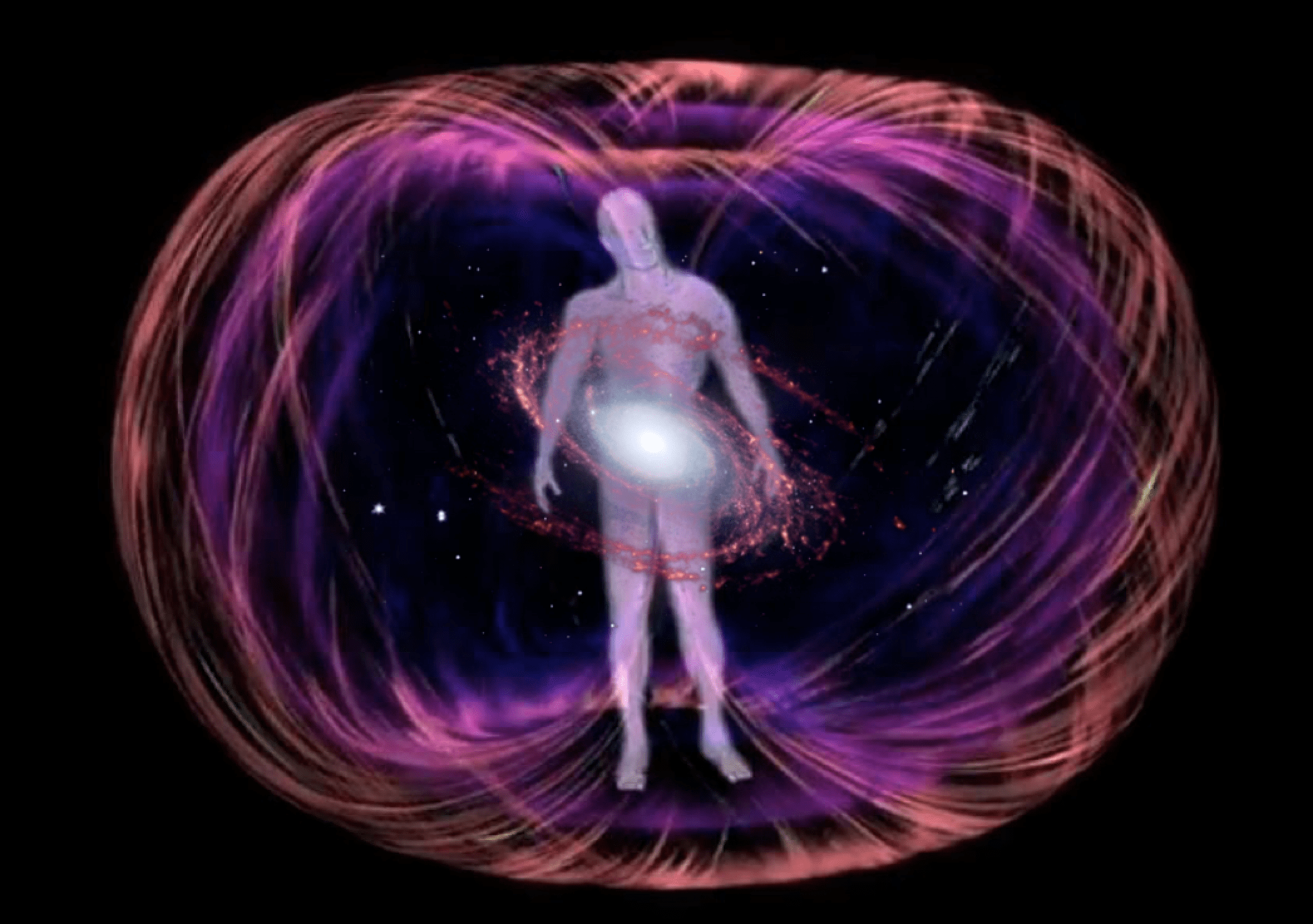
The human energy field is a spiraling torus that surrounds any living being both inside and out. How does it feel to have a spinning vortex of energy around your body and a spiral galaxy inside your belly?
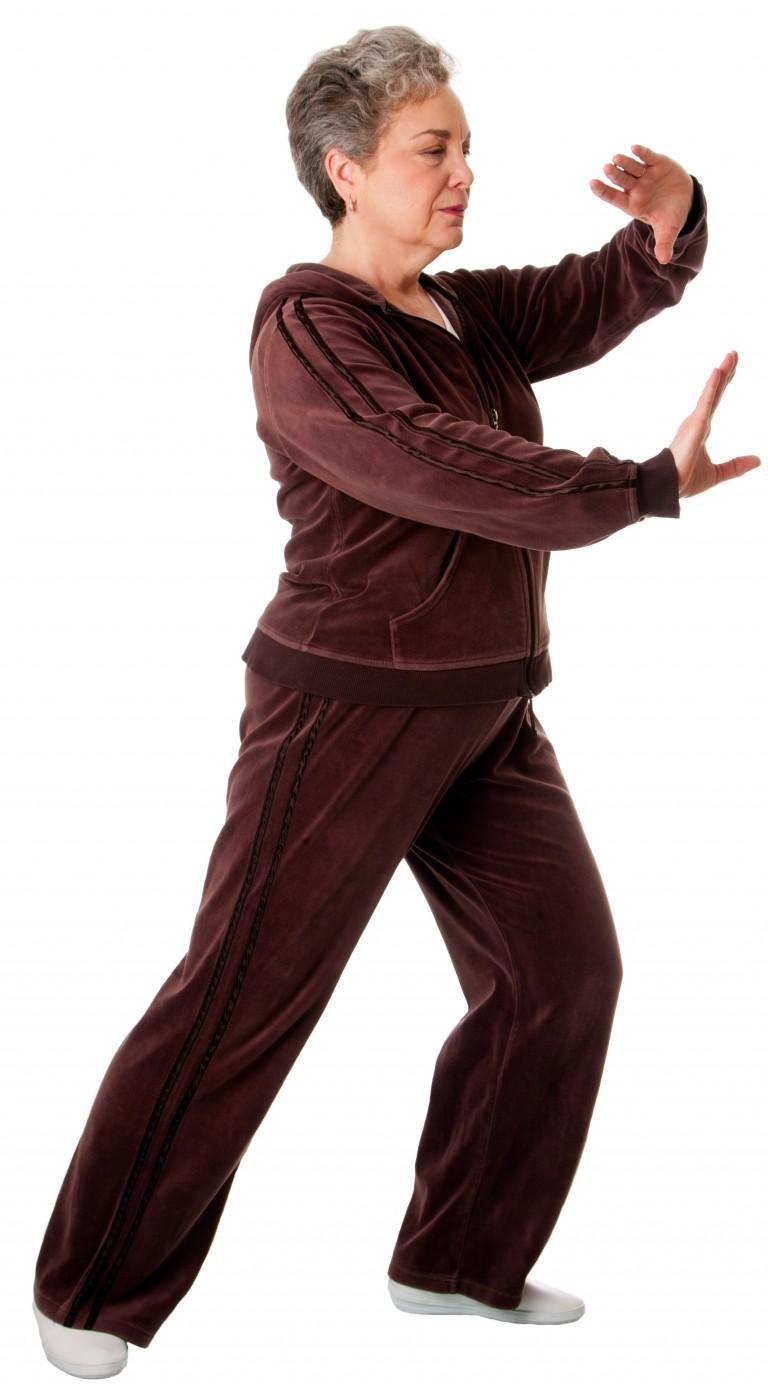
Benefits of Taichi for Physical Health
- Regulate the breath
- Quiet the mind
- Increase bone density
- Heightened body awareness
- Promotes healing and rehabilitation from many
medical conditions. - Reduces stress and anxiety
- Relieves moods and depression
- Greater aerobic capacity and muscle strength.
- More energy and stamina.
- Enhanced flexibility and agility.
- Lower blood pressure and improved heart health.
- Reduce Inflammation.
- Better balance, fewer falls.
How NOT to do Taichi
Taichi is curvy, smooth and sexy. It follows the natural cycles in Nature. It moves seamlessly from from soft to hard, from Yin to Yang. Is the moon jerky as it moves? Have you ever seed a distracted sunset?
Four Common Taichi Errors:
1. Snapshot Taichi – Stops between each movement.
2.Taichi Interruptus – Yin or Yang movements are incomplete. The curves are not finished.
3.Too slow, too serious – Taichi is lighthearted, not heavy or stiff. A slow speed is more difficult to sustain the energy flow, and possible only for the most highly skilled.
4.Distracted Dabbler Taichi – Extraneous movements, distracted eyes, and busy thoughts offer zero benefit. This person may practice 150 spiritual paths at once, but never in depth. Interrupts Taichi form if cell phone dings.
What are the primary Taichi forms in use today?
There are myriad styles and forms of Taichi. The styles are usually named by the family lineage, and the form designated by the number of movements, such as the Chen 108 form, or Yang 24 form. Lineages and variations abound. The primary Chinese family lineages have historically been Yang, Chen, and Wu, with hundreds of other variations that developed over time.
In 1956 Chairman Mao called for the unification of a simplified Taichi form so that everyone could practice throughout China. His research team included representatives from the primary families. They worked together for six years, extracting 24 steps from the Yang style Taichi, and rearranged them into the Beijing 24 form.
The Beijing 24 form is easier to learn and takes about 5 minutes to perform. A busy person can do three rounds in 20 minutes, including warm ups. The Beijing 24 Form is judged in many international contests and has become the most widely performed Taichi form in the world.
During the 1950’s, 60’s, and 70’s in the United States and Taiwan, Chen Man-ch’ing taught his own variation of Yang Taichi, which now practiced widely all over the world. Although he passed away in 1975, Cheng Man-ch’ing’s legacy includes many hundreds of schools around the globe that follow his lineage. In Taiwan, many of his direct students still teach. Huang Xingxian, one of Cheng’s most accomplished disciples, established over 40 schools in SE Asia, through which he teaches over 10,000 practitioners.
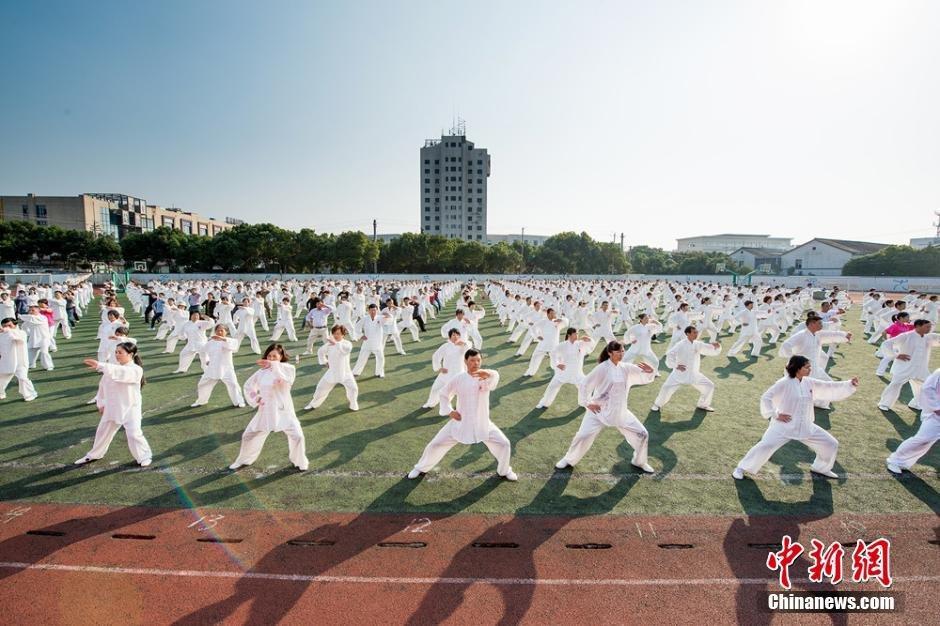
in 2015, over 50,000 people performed the Beijing 24 form simultaneously in 15 different locations in Henan Province, China, attempting to set a Guinness World Record.
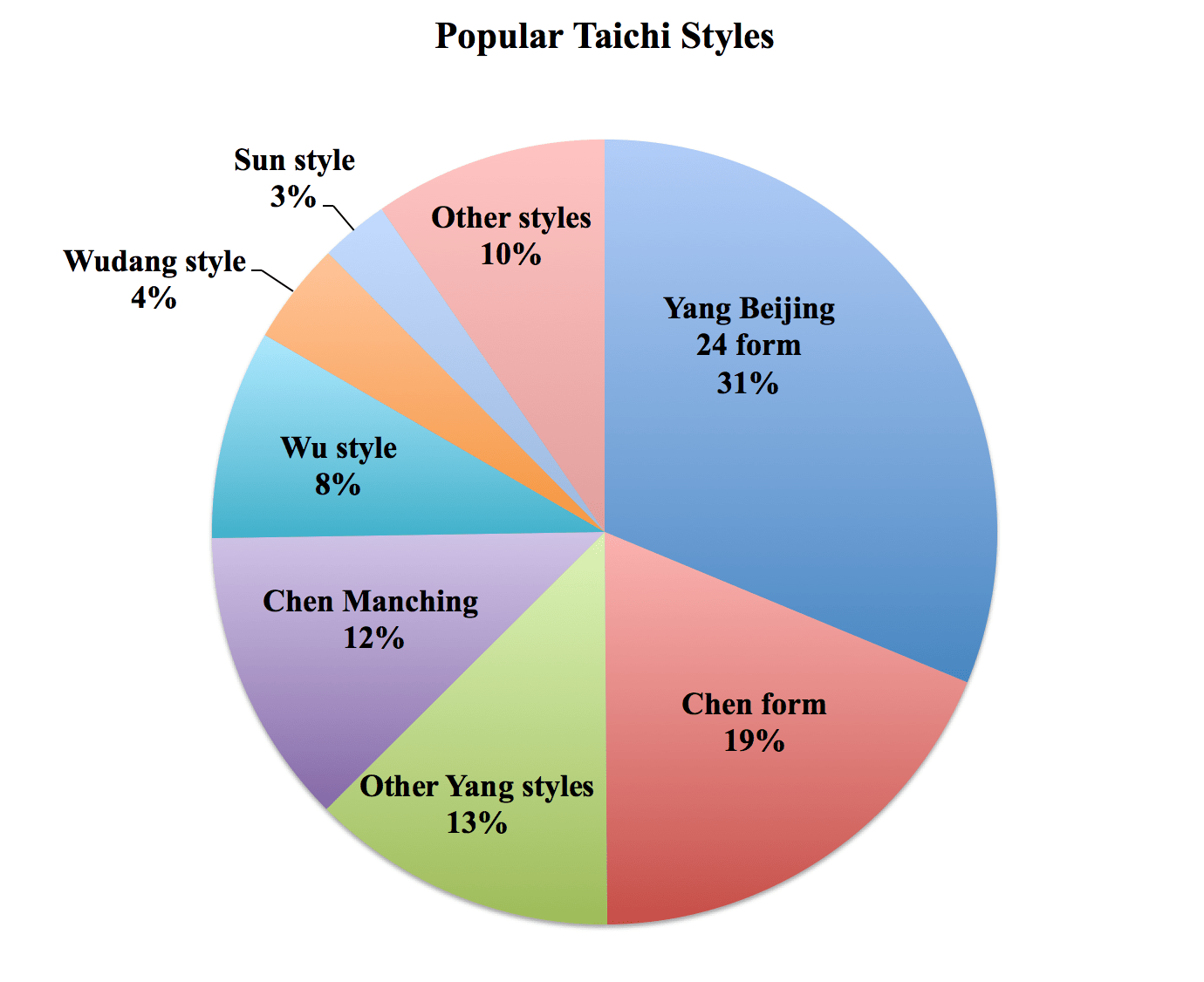
In 2016 a German online survey asked for the most popular Taichi forms. 499 responses were received, and this graph is the result. For more details click here.
Master Liu performs the Beijing 24 Taichi form.
6 Principles of Taichi
- Hold your Silky Bubble or Taiji ball flexibly between hands.
- Awareness on Extraordinary meridians opening, relaxing, activating in each movement.
- Know the 5 steps: Forward step, Back step, Half Step, Heel-toe turn, Twist step.
- Thread the 9-holed pearl up and down.
- Do each movement slowly, evenly, purposefully, walking like a cat.
- Use your mind to lead each movement, applying only a minimum of force.
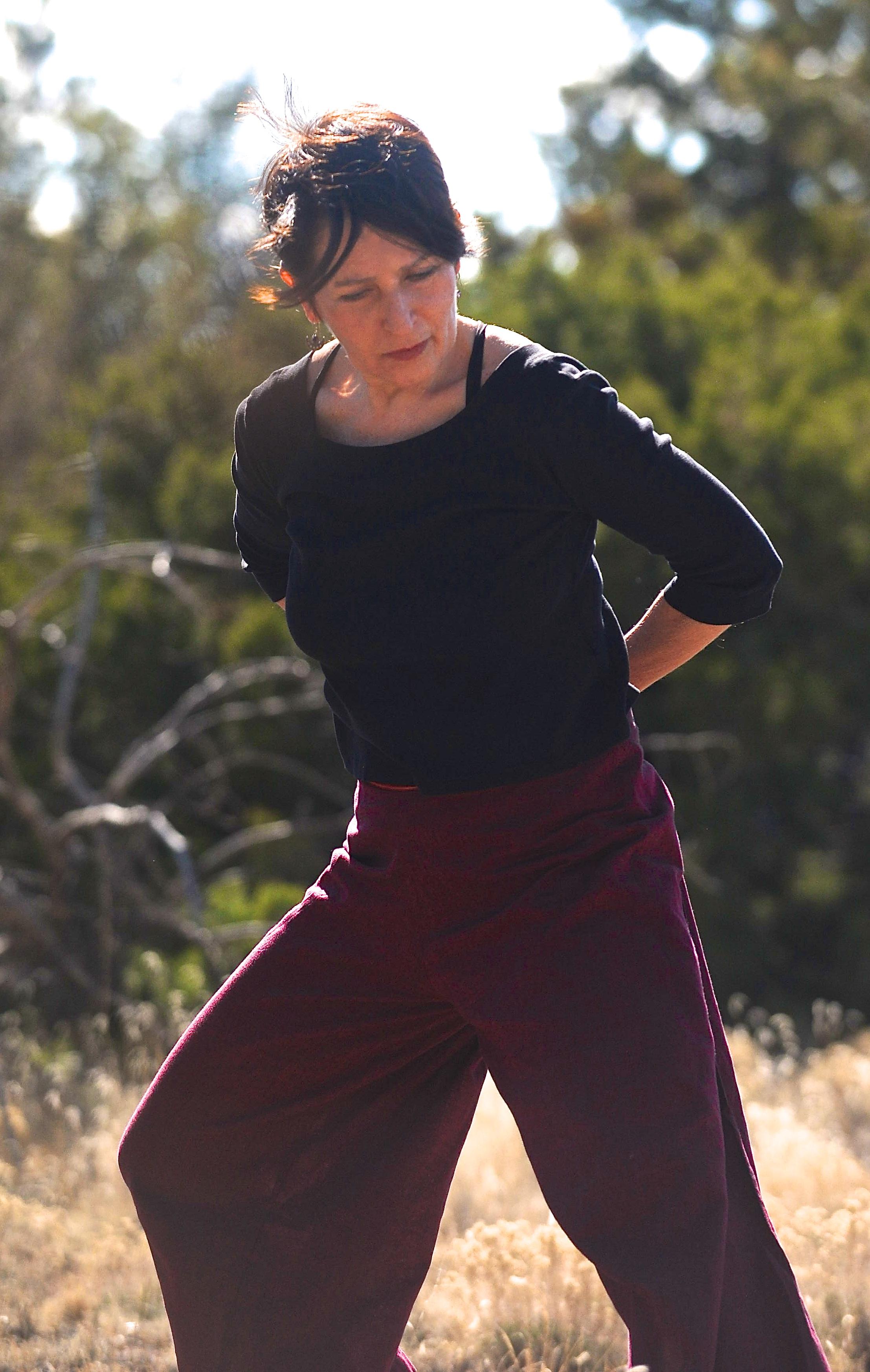 Taichi Beijing 24 Form – List of Movements
Taichi Beijing 24 Form – List of Movements
- Commencing
- Part the wild horse’s mane 3x
- White crane spreads its wings
- Brush knee and step forward 3x
- Play the lute
- Repulse monkey 4x
- Grasp sparrow’s tail (left)
- Grasp sparrow’s tail (right)
- Single whip
- Cloudy Hands
- Single Whip
- High Pat on horse
- Right heel kick
- Box ears with both fists
- Turn body and left heel kick
- Left Snake creeps down & Golden rooster
- Right Snake creeps down & Golden rooster
- Fair lady works shuttles R, L
- Needle at sea bottom
- Fan through back
- Turn body, deflect, parry and punch 2x
- Apparent closure, Withdraw and Push
- Cross Hands
- Closing
More Resources:
- http://www.egreenway.com/taichichuan/short.htm#Introduction
- http://www.egreenway.com/taichichuan/chang1.htm
- http://survival-mastery.com/skills/defence/what-is-tai-chi.html
- http://polariswushu.net/blog/2014/12/23/discrepancies-between-traditional-chinese-medicine-meridians-vs-taijiquan-and-qigong-channels/
- http://www.egreenway.com/taichichuan/short.htm#Introduction
- http://www.taichimania.com/taichi_article.html
- https://en.wikipedia.org/wiki/Cheng_Man-ch%27ing
- http://richardleirer.org/the-ideogram-for-tai-chi-and-the-true-hidden-meaning-of-the-characters/


